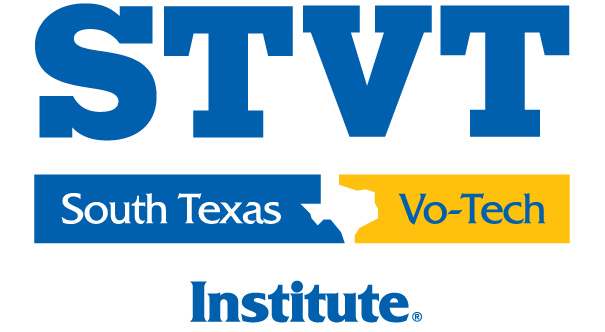Completing a vocational training program can be a game-changer for your future. Whether you’re a high school graduate, high school student, or secondary student looking to get ready for the workforce, or a professional looking to change careers, secondary schools are often the entry point for vocational education. A vocational program can help by offering training courses specific to technical careers. Vocational training means specialized, career-focused educational programs that provide practical, job-specific skills and hands-on learning experiences, so you can build the skills and knowledge of an entry-level employee.
Because vocational training is shorter, these programs can seem to fly by. So make every second count.
1. Take Time to Think About Your Goals
Before choosing your program, think about what you want to achieve once your training is complete, such as more career opportunities. Is there a specific industry you want to get into, or would you like to build a flexible skill set that can prepare you for many avenues? Knowing your goals can help you narrow down your program options, explore different vocational majors, and choose the right program for your future career by considering the learning outcomes of each program.
If you’re not quite sure what you want to do but know you want to further your education through further education pathways after secondary school, speak with a member of our admissions team. As part of our admissions process, we help prospective students identify their goals and discuss whether our programs can help.
2. Choose a Program That Aligns with Your Goals
Vocational training programs are designed for specific industries to help you build the skills of an entry-level employee. Choosing a program that aligns with your goals can help you build skills relevant to your chosen field, including job-specific training and general employability skills. It can also help improve your motivation and engagement and develop personal skills and soft skills that are important for career development, because the content covered can be applied directly to your goals and interests. Plus, a hands-on approach is a big tick for many vocational programs, so you can get practical experience.
3. Know the Types of Vocational Programs and Schools
When looking at vocational training programs, remember that there are many ways to gain practical skills and technical knowledge for specific careers. Vocational training can take place in various settings, including vocational schools, community colleges, and technical institutions. Each has its own benefits and learning environments for different career paths.
Some vocational programs focus on apprenticeship training, where you learn directly from experienced professionals through a combination of hands-on work and classroom instruction. This is ideal for those who want to get practical experience while building a strong foundation in their chosen field. On-the-job training is another popular option where you can develop your skills in real-world settings and learn the day-to-day requirements of your future career.
Formal education programs at vocational schools and community colleges provide a structured curriculum, blending technical knowledge with practical training. These programs are designed to prepare students for specific careers, with a clear pathway from education to employment. By knowing the different types of vocational programs and schools available, you can choose the training that best suits your interests, learning style, and career goals.
4. Focus on Practical Skill Development
One of the biggest strengths of vocational training programs is their focus on practical skills that employers are looking for. Unlike traditional academic studies, vocational courses are designed to prepare students for the realities of the workforce by providing hands-on training and technical knowledge in many different fields.
Whether you’re interested in automotive repair, hospitality skills, or medical assisting, vocational training offers specialized courses that teach you the exact skills needed for your chosen profession. These training programs are often led by instructors with real-world experience, so you learn the latest techniques and industry standards. By focusing on practical skills, you’ll not only gain confidence in your abilities but also improve your job prospects and readiness for a rewarding career.
5. Get to Know Your Classmates and Instructors
Your peers and instructors can become a great support system for you throughout your program. They can hold you accountable and create a positive learning environment. You can form study groups with your classmates and make connections that last long after graduation.
Having such a strong network in your corner can also help you stay on track with your studies and provide valuable networking opportunities.
6. Attend Classes Regularly and Participate Actively
By attending classes, you can learn new skills through hands-on learning and ask questions in real-time. This can help you build confidence in your new skills and retain new information better. We encourage you to attend as many classes as possible.
7. Create a Study Routine
Consistency in your schedule can prevent last-minute cramming and reduce academic stress. That’s why we recommend creating a study schedule that works for you, so you can progress at your own pace to accommodate different learning needs.
You may have outside commitments that compete for your time. Learning how to manage your time effectively can help you from falling behind in your studies and becoming overwhelmed with coursework. When creating a study routine, make sure to include regular breaks and review sessions. Make time to get plenty of sleep, so you can focus better during lessons.
8. Don’t Be Afraid to Ask for Help
Seeking help when you have questions or don’t understand the material can improve your grades and learning experience. Our instructors and staff are here to support you, from clarifying complex topics to providing study strategies. Whether it’s for academic advice or guidance on the program, please don’t hesitate to reach out when you need help.
9. Build Your Professional Network — Use Partnerships, Externships, and Career Resources
One of the biggest advantages of many vocational training programs is their strong connections with the private sector. These partnerships open doors for students to gain practical experience and build relationships with potential employers even before graduation. By participating in programs that collaborate with local businesses and industry leaders, you can access job placement opportunities that give you a head start in your career.
Vocational education and training providers often offer job placement support, including career counseling, resume assistance, and interview preparation. These services are designed to help you transition from the classroom to the workplace. Many vocational programs also focus on high-paying jobs in fields like technical education, healthcare, and skilled trades, so you can pursue a stable and financially rewarding career.
By taking advantage of private sector partnerships and job placement resources, you can get the most out of your investment in vocational training and set yourself up for long-term success in the job market.
Maximizing Externships
Externships are a great way to get real-world experience while you’re still a student. Externships are often facilitated through partnerships with local employers, a great opportunity to start networking in your desired industry. Treating your externships seriously and looking for ways to make lasting professional connections can be very helpful.
The connections you make during your externships can lead to future job offers and mentorship opportunities and increase employment opportunities for students.
Externship opportunities are not available for all programs at South Texas Vocational Technical Institute. Please speak with a member of our admissions team for more information.
Don’t Forget About Career Services
Our career services team is ready to help you get ready for upcoming interviews once you complete our program. You can even schedule time to meet with them before graduation so they can get an idea of which postings interest you. This will help the Career Services team send you job leads as soon as you graduate.
They can also review your resume and give you tips on how to keep it up to date. Certificate holders as well as other graduates benefit from these services. They can even do a mock interview with you to help you improve your interview skills. They can give you feedback and help you work through any nerves you may have before your interview.
Engaging with Career Services towards the end of and after completing your program can be helpful during your job search. We can’t guarantee you’ll find employment, but our team will help you explore opportunities and support your transition to employment. Be sure to take advantage of the resources available to you before and after completing your program.
Get Ready for Your Next Career with Vocational Training
Vocational training programs can offer opportunities to gain hands-on experience and practical skills in growing fields. Staying engaged, building connections, and utilizing available resources can help students get the most out of their training.
If you’re ready to explore vocational training options, STVT offers programs designed to provide practical, skills-based learning.
Interested in learning more about how our training can help you achieve your goals? Fill out this form or contact us at (866) 480-9766.
Disclaimers: Information within this blog is for general information purposes only. South Texas Vocational Technical Institute (STVT) does not assume or guarantee certification/licensures, specific job/career positions, income earning potential, or salary expectations based on the programs offered at STVT. Career and program information statements in this blog do not guarantee that programs or other information mentioned are offered at STVT.



